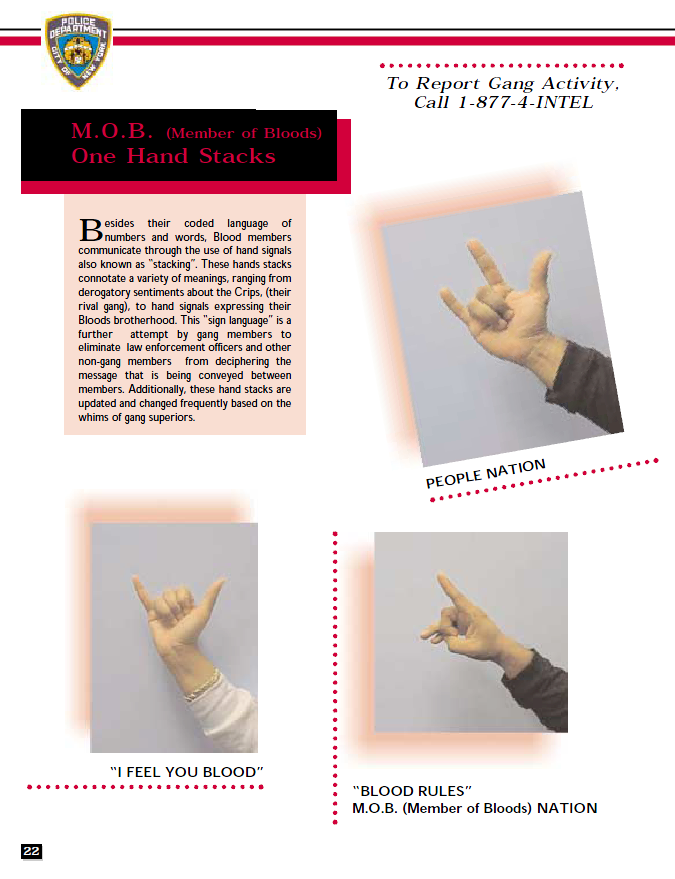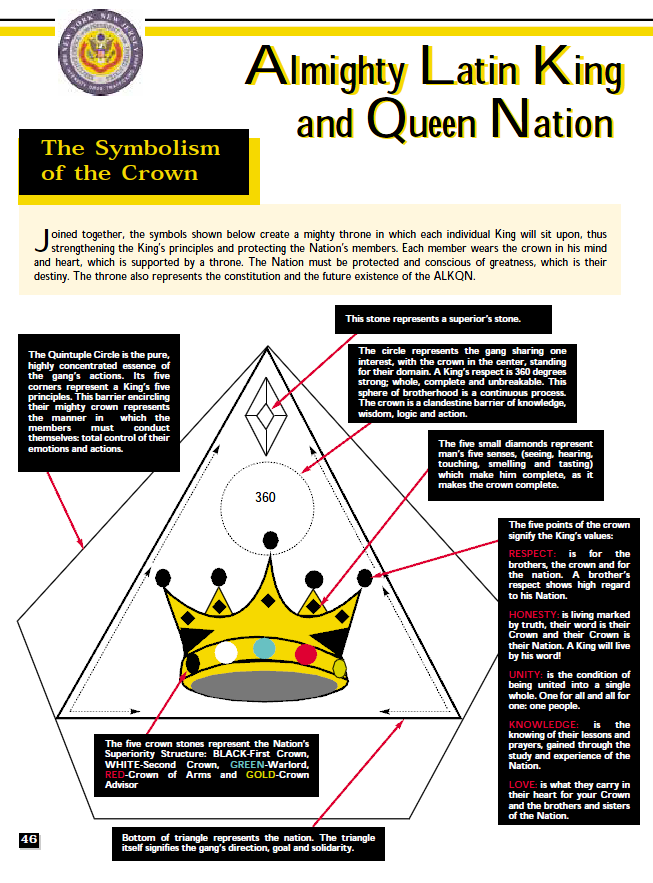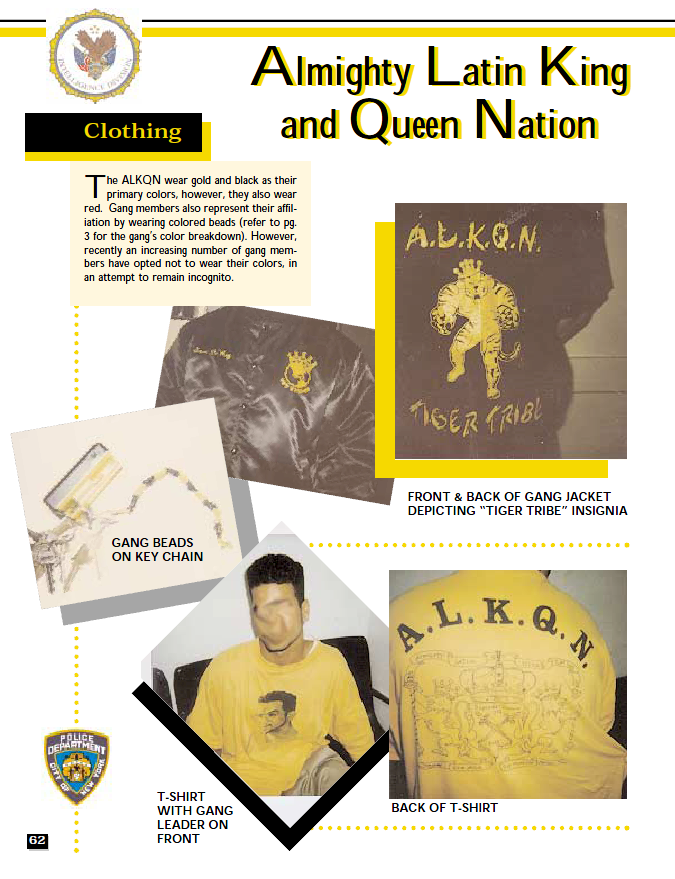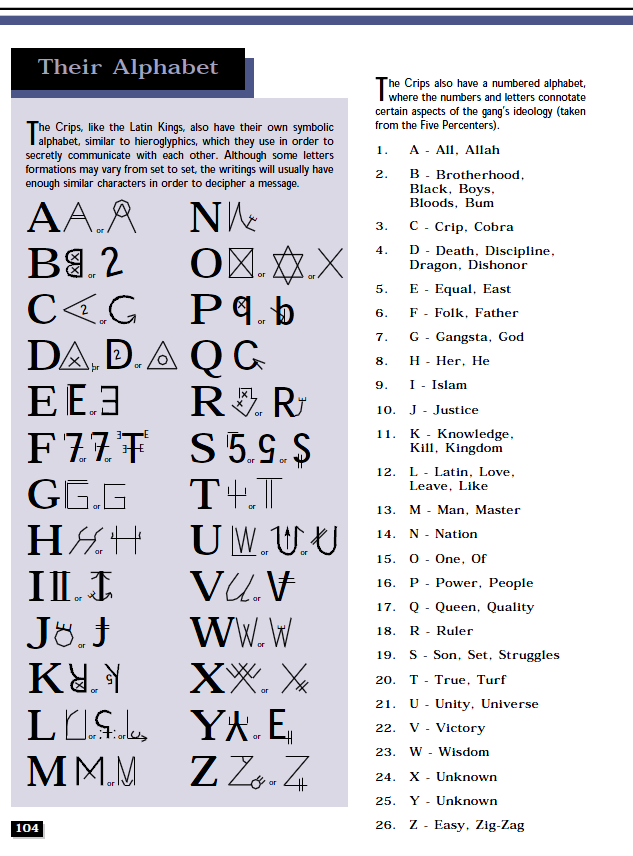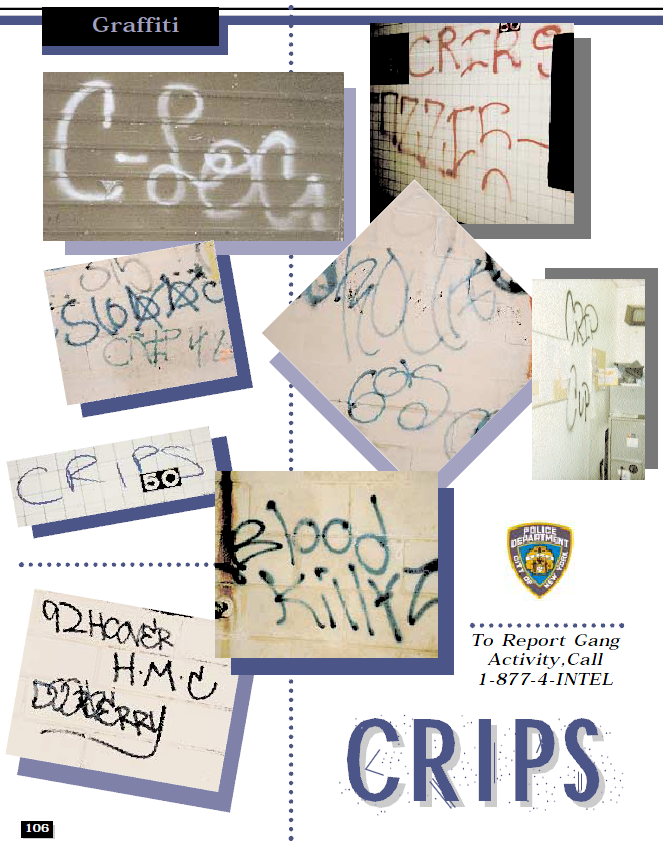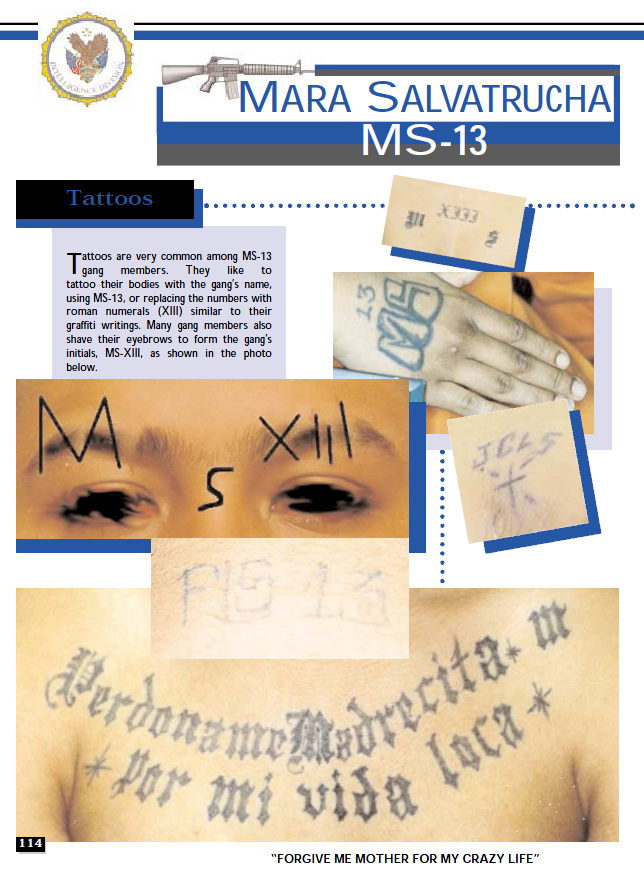 Piru gang signs in the blood is a matter that is required to be mastered, because by mastering these Piru sign the communication between groups will more easily and smoothly.
Piru gang signs in the blood is a matter that is required to be mastered, because by mastering these Piru sign the communication between groups will more easily and smoothly.Thursday, September 16, 2010
Wednesday, June 2, 2010
NYPD Blood Street Gang Manual
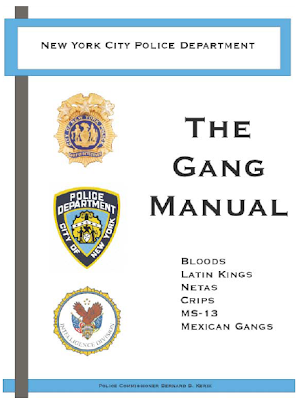 This book is a compilation of various gang intelligence information from various sources including detective and police officer files, primarily confiscated from arrested and/or incarcerated individual gang notes and drawings. Additional material was obtained from other law enforcement agencies’ publications and presentations used for internal officer training, as well as from various other gang publications and internet sources.
This book is a compilation of various gang intelligence information from various sources including detective and police officer files, primarily confiscated from arrested and/or incarcerated individual gang notes and drawings. Additional material was obtained from other law enforcement agencies’ publications and presentations used for internal officer training, as well as from various other gang publications and internet sources.Six major New York City gangs are presented in this book: the Bloods, the Almighty Latin King and Queen Nation, the Netas, the Crips, Mara Salvatrucha (MS-13), and the Mexican Gangs. Sections within this book include the origin and history of the gang, its structure, rules and regulations, oaths and pledges, symbols and emblems, coded language and hand signals, clothing, tattoos and graffiti. It is our hope that an officer’s knowledge of gang characteristics will assist in combating gang-motivated crimes and reduce the propensity for violence towards the law enforcement community and innocent citizens.
…
publicintelligence.net
Wednesday, May 26, 2010
About the Blood Heart Group?
 Mission Statement:
Mission Statement:The Blood Heart Gang and the Blood Heart Group teaches, inspires and gives back to our planet and all of its members.
Why the name Blood Heart Gang?
BLOOD:
Due to its importance to life, Blood is associated with a large number of beliefs. Blood is a symbol for family relations: To be “related by blood” is to share ancestry or descendants. The reality is as members of the human race, we all share a common ancestry. We are all related and united by blood.
HEART:
The heart is the center of the total “human” personality with reference to intuition, feeling, or emotion. It is the center of human sympathy, compassion, caring. Most importantly it is the center of love, the most powerful positive emotion that humans can possess.
GANG:
The word “gang” is actually derived from the Hindi root word “gonge”, which described “a journey.” “Gang” is the journey that human beings need to embark on in order for us as a collective unit to start caring not only about each other, but about our entire planet that we occupy.
About the Blood Heart Group
The whole world witnessed a peaceful protest in Myanmar and the violent Junta response. We also watch as tensions rise in the Middle East and Africa. An old African proverb challenges, “It takes a village to raise a child.” Today’s world is smaller than ever. Today we are the village. We are the village when we choose to be more informed about a celebrity’s latest arrest than about our children’s education. WE are the village when we choose to deny our impact on the world because doing so would be inconvenient. WE are also the village when we decide to hope for the future and vote for change. In the past, it was considered the highest honor to be a teacher or the “reciter” of the stories that continue to pass on our heritage from one generation to another. These days, this honor and tradition has slowly faded.
BHG fully committed to change this. In the past, it was considered the highest honor to be a teacher or the “reciter” of the stories that continue to pass on our heritage from one generation to another. These days, this honor and tradition has slowly faded. We believe that as society changes, we must continue to change with society by inventing vehicles for delivering messages necessary for our mental and spiritual growth. We celebrate this innovation and creativity by highlighting those who have shaped the world by their strength, courage, and wisdom. We can’t think of a better way to do this then to create a clothing company that believes in our message without compromising the desire and need for having clothes that look like a “work of art”.
BHG is dedicated to making sure eons of culture and thought goes into every single piece of apparel. Blood Heart Clothing Group also promises to use organic, sustainable and environmentally friendly products and materials whenever possible.
Saturday, April 24, 2010
Difference Between Crips and Bloods 2010
 Crips was a gang formed in Los Angeles, USA in the late sixties and early seventies. Bloods was mainly a gang formed by smaller street gangs coming together to counter the growing influence of the Crips. The main gang that formed the Bloods was Piru Street Boys.
Crips was a gang formed in Los Angeles, USA in the late sixties and early seventies. Bloods was mainly a gang formed by smaller street gangs coming together to counter the growing influence of the Crips. The main gang that formed the Bloods was Piru Street Boys.Raymond Washington formed a gang by the name Baby Avenues or Avenue Cribs signifying the young age of the members of the gang. The gang initially propagated the philosophy that it wanted to protect its neighborhood from outsiders but this claim soon faded away and the gang was openly involved in various criminal activities including robbery, murders, drug dealings, etc. Raymond Washington united his gang with that of Stanley Williams from the east and west side of Los Angles to form an alliance to protect their areas of influence. Washington disliked guns and preferred to settle all differences by hand to hand fights. However, as more and more local gangs joined in and made Crips one of the largest associations of street gangs, his influence diminished till finally he was shot dead in 1979. The gang members were primarily African Americans and had a particular affinity for blue color in their dressing.
The Crips began to target other gangs as they grew in size. It was in this time that some of the non-Crip gangs got together to form an alliance. The main among them were the Pirus or the Piru Street Boys. The gang formed out of this alliance came to be known as Bloods. The members of the Bloods have a particular affinity for the color red in the clothing to identify themselves. The smaller gangs associated with the alliance began to be known as sets. The influence spread across the United States in a few years. The sets on the eastern coast became associated with United Bloods Nation or UBN and this too soon came to be known as only Bloods.
Summary
1. Crips was formed in 1969 by Raymond Washington and Stanley Williams deciding to join their gangs. Bloods was formed with rival gangs coming together to counter the rise of Crips with the main being Piru Street Boys.
2. Crip gang members associate with the color blue in their dresses while the Bloods associate with the color red.
3. The rivalry of these gangs started out over control of the neighborhoods initially but now is more to gain control over the criminal and illegal activities.
source: http://www.differencebetween.net
Wednesday, April 21, 2010
Crip kill a blood let 2010
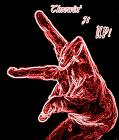 LET IT RAIN LET IT FLOOD LET A CRIP KILLA BLOOD LET IT RAIN LET IT DRIP KILL A SLOB CUZ I CLAIM CRIP LET IT RAIN LET IT THUNDA BURY A SLOB 6 FEET UNDA ...
LET IT RAIN LET IT FLOOD LET A CRIP KILLA BLOOD LET IT RAIN LET IT DRIP KILL A SLOB CUZ I CLAIM CRIP LET IT RAIN LET IT THUNDA BURY A SLOB 6 FEET UNDA ... 4 May 2009 ... Let It Rain Let It Flood , Let A Crip Kill A Blood ... let my favorite color drip watch a blood kill a crip look at him watch him rip ...
Daniel Surujpal Kill a Blood win a prize,Kill a Crip ur whole family diez Let it rain, let it flood,Let a Crip kill a Blood Let it rain, let it drip,After ...
let it rain let it flood let a crip kill a blood. let it rain let it drip, kill a slob cuzz i klaim cripp soldier soldier, war war lose 1 kill 2 never rest ...
source: kaleigh.bigislanddancesociety.com
Monday, April 12, 2010
Blood Is a Prison Gang
 This page is under construction, if you have any information on this gang please forward me the information. Here is some basic information found from the internet.
This page is under construction, if you have any information on this gang please forward me the information. Here is some basic information found from the internet.While the Bloods are not an actual prison gang they are recognized as part of the 11 Security Threat Groups identified by the Texas Department of Criminal Justice.
In the early 70's, the ""Bloods"" were born. More out of necessity than anything else, the "Blood" sets were banded together to protect each other from the rampant Crip menace. The "Bloods" originated when Sylvester Scott and Vincent Owens started the "Compton Pirus", this gang started on West Piru Street in Compton. An event which assisted the rapid growth of the blood sets occurred when the Compton "Crips" had a difference of opinion with the "Pirus", the two gangs had a major fight and the outnumbered Pirus were badly beaten. This prompted a meeting between several fragmented gang sets on Piru Street, the "Denver Lanes", "Laurdes Park Hustlers", "Bishops" and "LA Brims" were in attendance. The "Pirus" aligned themselves with the "Laurdes Park Hustlers" and the "LA Brims", the Brims were eager to join alliance against the "Crips" as the "Crips" recently murdered a Brim gangster and the Brims were too small to exact revenge against the "Crips" without major reprisals. Other gangs who had been threatened or attacked by "Crips" incorporated into Blood sets as well. The Compton "red" gangs are called "Pirus", other "red" gangs such as the "Brims", "Bounty Hunters", "Swans" and "Family" refer to themselves as ""Bloods"". Numerically, the Blood sets are outnumbered by the Crip sets, but "Bloods" are well known for their "take no prisoners" ruthless and violence.
With all these gangs roaming in a relatively small section of the city, gangsters needed a method in which to ID each other, they wanted to avoid attacking gangsters from different sets, but same gang. "Crips" identify themselves with the color blue, this is believed to originate from the colors of Washington high school in south LA. Crip gangsters wear articles of blue clothing, blue and kerchiefs, shoelaces, hair rollers, hats, belts or sweat shirts. A blue article of clothing in a blood hood, can and will get you killed. Other dark colors have been used as well, such as black, brown and purple. If they are unsure of ones gang affiliation, they'll flash a gang "sign" which is basically a form of sign language made with the hands, they also refer to each other as "Cuz" or "Blood" depending to set affiliation.
"Bloods" ID each other with the color "red", school colors of Centennial High School, and obviously red is the color of blood. Like "Crips" who wear blue clothing, "Bloods" wear red. Another color may be used in relation to the name of the set, such as green for the Lime Hood Pirus. They refer to each other as "Blood".
By the 1980's, there were 30,000 gangsters in and around LA. The 80's also saw the explosion of crack cocaine, criminal street gangs were quick to jump on the crack bandwagon which grew into today's gang cancer. The majority of these gangsters were from the inner city ghettos where unemployment is very high and families are living at, or under the poverty level. It's near impossible to tell a 15 year old gangster that joining a gang was a bad thing because it was the gangsters that are making $300-$500 a day selling crack. The gangsters have what many ghetto youths don't, expensive clothing, new expensive cars, gold "rope" jewelry, wads of cash in their pockets and lots of girls. A common comment I hear is "Why should I work at Mac-Donald's when I can make more money than you?", rebuttals of being a good citizen and about responsibility go in one ear and out the other.
Black gangs have no formal structure to speak of, the older members in their late 20's early 30's, are called the "Shot Callers". Most "Shot Callers" have done hard time in prison where they made "business" contacts, they are the ones who deal in the major acquisition of drugs, the youngsters are often the foot solders who do the selling, fighting and dying. The young members are generally the most dangerous because they're willing to prove their gang loyalty by committing extremely violent acts, which often times includes shooting at, or otherwise fighting with police officers. We find the juveniles are often used to commit violent crimes because they face little, or no jail time and they know it. More than a hundred times they've bragged to me "I'll be home before you're done writing the report", which is true, by law we must release juveniles to their guardians. The juveniles are also the ones who are driving the "G" rides, in my experience 90% of the time.
Because of the large sums of cash made by dealing, these gangs are able to arm themselves with expensive, high quality weapons. Some gangs have actually purchased legitimate businesses to launder the money, one South Central liquor store reported $500,000 in profits one year, that's a lot of bubble gum and Old English 800. Were finding that more and more professionals like CPA's, accounts and what we call "dope lawyers" are willing to assist these gangs because they are rewarded handsomely for their services. Most gangsters are poorly educated and ill prepared to thrive in the real business world, add a CPA, investment banker and lawyer to help manage the large amounts of cash generated by gangs and they have almost unlimited potential. An unfortunate side effect is that some black owned business from South LA are cynically viewed as dirty, "Death Row Records", a rap music publisher, has long been suspected as a major drug laundering business.
We're also finding more and more dope lawyers defending these gangsters in criminal proceedings, I often wonder how a 18 year unemployed Crip can afford a $500 per hour Ivy League attorney. Some of these dope lawyers operate under the guise of wanting to give the poor black inner city youth the best defense possible and claim to be working "pro bono" (for free), more than once they've been found with large sums of un taxable cash in backpacks or duffel bags. These attorneys risk falling victim to the short fuse and violent tendencies of these gangsters, which offers an added motivation to make sure their client is acquitted. Rival gangs, or even disgruntled fellow gangsters have more than once ambushed a dope lawyer and stolen his cash reward.
Tuesday, February 16, 2010
Blood Crips Hand Signs
 Crips Background: The Crips, a fierce rival of the Bloods gang, are an extremely violent street gang which originated in Los Angeles, California in the late 1960's. The original Crips were a Black gang were first reported on the campus of Washington High School in South-Central Los Angles. During the early 1970's the gang grew and branched out to other parts of Los Angeles County. These new subsidiary street gangs were known as sets and they used the term "Crips" in their individual gang name - i.e. Harbor City Crips, Compton Ave Crips.
Crips Background: The Crips, a fierce rival of the Bloods gang, are an extremely violent street gang which originated in Los Angeles, California in the late 1960's. The original Crips were a Black gang were first reported on the campus of Washington High School in South-Central Los Angles. During the early 1970's the gang grew and branched out to other parts of Los Angeles County. These new subsidiary street gangs were known as sets and they used the term "Crips" in their individual gang name - i.e. Harbor City Crips, Compton Ave Crips.Membership: Most Crip street gang members are between the ages of 12-24 years. The average age is 17-18. Most members are Black but Whites and Hispanics are known to be members of Crips sets in various parts of the United States. Crip members rarely carry identification and in addition to their street moniker (nick name) use an alias. Gang initiation is usually done in various ways: an armed robbery, an assault or murder, drive by shooting, or a beat-in where other members physically beat up the prospective member. This frequently called a "jump-in" and is designed to show courage and gang loyalty.
Identification: Crips identify with the color blue and usually wear a blue bandanna as an identify item, called the flag.
Crips refer to one another as "Cuzz" and use the letter "C" to replace the letter "B" in their conversations and writings. They have an intricate communications system which involves not only graffiti on walls - which marks their territorial boundaries - but also use of hand signals (flashing) , displaying their colors and wearing selected athletic clothing. The initials BK represent their status as "Blood Killers." Crips seldom wear tattoos. Their graffiti represents past or future gang activity.
Saturday, February 6, 2010
Blood History Los Angeles Gangs
 1920's and 1930's
1920's and 1930'sAfrican-Americans first formed street gangs in the late 1920s and early 1930 on the Eastside of Los Angeles near Central and Vernon Avenues. They were also forming clubs in the downtown area of Los Angeles where they first settled around the same time. During the years to follow, African-Americans began to move south from downtown Los Angeles, down Central Avenue towards Slau son Avenue. The area between Slauson Avenue and Firestone (Manchester), during the 20's and 30's was occupied primarily by white residents, but just south of Firestone, African-American populations were growing in Watts between 92nd Street and Imperial.
During the 1920's and 30's, some of the Black gangs that were active in Los Angeles were the "Goodlows," "Kelleys," "Magnificents," "Driver Brothers," the "Boozies," and the "Blodgettes" which hung out in an area off the Imperial Freeway known as the "Blodgette Track," where the 105 Freeway is today.
The "Boozies" were a family of many brothers and friends who were involved in prostitution and robbery. The guys frequented the Jefferson Park area on Los Angeles and hung out on Denker Avenue. The "Magnificents" were a group of youths from the Central Avenue on the eastside of LA. Eventually these gangs faded in the late 1930's as the youths became older. Gangs during this time were strictly juvenile in nature, and those reaching their late teens distanced themselves from the gang.
The Clubs of the mid 1940s to 1965
In the mid 1940's some new Black gangs began to form in the Central Ave area, and in East Los Angeles. Some of the gangs that were known during this period were the Purple Hearts, 31st Street, and 28th Street. By the late 1940s several more clubs appeared.
In the late 1940s clubs in the Black community were gaining popularity. Some were early attempts at political organizations but several clubs were formed as protective mechanisms against White violence from the white clubs of the time. Because of the increased migration of Blacks from the South during WWII, White residents developed a resentment towards the new migrants. Some of the Black clubs that formed were involved in petty theft, robbery and assaults, but murder was extremely rare. Weapons of choice were chains, bats, and occasionally knives, and disputes were mostly settled by hand to hand combat. The peak period of these groups occurred during the early 1960s and identifying these Black youths as "gangs" was started by the Los Angeles Police Department. The car clubs were also associated as gangs. The car clubs dominated through out the 1950s, and some of the popular car clubs in Los Angeles during that time were the "Low Riders" the "Coasters" the "Highwaymen" and the "Road Devils."
Other major territorial clubs from the 1950s and 1960s were the "Businessmen(1957-1965)," the "Gladiators," the "Slausons (1952-1965)," "Rebel Rousers," the "Huns," "Farmers" from Watts, and "Blood Alley" just to name a few.
By 1965 these club forged an alliance and participated in the Watts Rebellion. After the August rebellion of 1965 many of these gang members turned their efforts in other directions. Many political organization and radical movements developed during the years from 1965-1969. Bunchy Carter, who was once a Renegade Slauson (A Los Angeles Street Gang from the late 50's to 1965), became the leader of the Los Angeles Chapter of the Black Panther Party. Other key figures that were influetial into the Black consciousness of the 1960s, was Ron Wilkins, William Sampson, Gerald Aubry, Robaire Nyjuky, and Hakim Jamal. They were all former club members prior to 1965.
Late 1960's, early 1970's
As Black groups became more socially conscience to racism and police brutality, the FBI and LAPD considered these groups as radical and a threat to the national security of the United States. By 1969 Bunchy Carter and John Huggins were murdered at Campbell Hall at UCLA, in a dispute with US members. Geogre and Ali Stiner along with Claude Hubert of US organization were arrested, convicted, and sent to San Quentin prison for their involvement. There are still many unanswered questions about why Carter and Higgins were killed, but some insist that Karenga's US gunmen where police inflitrators for the FBI, while others say that Carter and Huggins were armed and attacking an US associate when they were shot and killed. Whatever the case, this was a turning point in B lack Los Angeles identity as youths who were too young to participate in the movement with organizations like the Black Panther Party and US, began to form their own groups as COINTELPRO tactics and actions of the LAPD Criminal Conspiracy Section left ineffective any Black political organizations. (I discuss this in more detail in Chapter 4 of my manuscript.)
In the aftermath of several killings and incarcerations of those involved in the black movement, Raymond Washington, (b. August 14, 1953- August 1979) a 15 year old youth who attended Fremont High School, Locke High School and who frequented the area of Washington High School in Los Angeles, got together a few youths and started a gang called the Baby Avenues. The Avenues was a gang of older youths who had been active since the early 1960's, and Raymond Washington, along with Stanley "Tookie" Williams, Avalon Gardens resident Jimel Barnes and a few other youths looked-up to and admired the Avenue Boys. They attempted to preserve the Panther aura, so in 1969 Raymond Washington created the "Baby Avenues," and to represent the new genreation of this quasi-political group he called it the Avenue Cribs, or Baby Avenues. The word Crip is a derivative of the word Crib, but how the use of Crip occured is not clear according to the available literature, but I discuss this more in depth giving an accurate account how the term Crip materialized in my manuscript. By early 1972, the use of "Crip" had been entrentched into Los Angeles Gang culture and the term Crib had been gradually phased out.
In the early days there were not that many Crip gangs. Near Freemont High School there were the Eastside Crips, across the Harbor Freeway is where the Westside Crips started, and in Compton there were the Compton Crips. Raymond Washington had organized the beginnings of all these Crip sets, by hooking up with other youngsters like Stanley Williams and Jimel Barnes.
By late 1971 the Avalon Garden Crips and the Inglewood Crips joined forces with the other crip sets. The Crips began to expand to non-Crip gang territories. The L.A. Brims which began in 1969 on the westside were a powerful street gang,but they were not Crips, and the Blood alliance had not been established. Several gangs which eventualy became part of the Blood family had already existed though.
There were also the Piru Street Boys in Compton, the Bishops, Athens Park Boys and the Denver Lanes. The Pirus, which are Bloods now, actually hung out with the Crips prior to 1972. For a short time they were known as the Piru Street Crips, and they also wore the the traditional blue rags (bandana) as part of their attire.
During the summer of 1972, the Crips from Compton, and the Pirus had a conflict, and an all out rumble ensued. The Pirus were out numbered, and the Crips prevailed. The Pirus wanted to terminate peaceful relations with the Crips so they turned to the Lueders Park Hustlers for back-up. They agreed and a meeting was called on Piru Street. The Crips had murdered an L.A. Brim member earlier that year, so the Pirus asked the Brims to attend the meeting too. Others that attended were the Denver Lanes, and the Bishops.
How to combat Crip intimidation was discussed along with the creation of a new alliance to counter the Crips. At that time the color of bandannas was not important, but since the Crips were known to were blue bandanas, the Pirus and the other groups decided to discontinue the wearing of blue bandannas. They decided to take on the wearing of an opposite color, red, and created a united organization which later became known as the Bloods. The Pirus, Brims, Athens Park Boys, and Pueblos decided to unite with the Bloods, and soon after, other groups who had been threatened or attacked by Crips joined the Bloods.
1980s and 1990s
By 1980 there were 30,000 gangs members in Los Angeles County, and by 1982 gang members started to deal heavily in narcotics. Crack cocaine was a new drug and gang members were earning thousands of dollars literally over night. Throughout the 1980s homicides increased each year from 1985 to 1992, but after the Civil unrest of 1992 gang homicides remained stable.
More about the Manuscript
By 1996 there are approximately 274 Blood and Crip gangs in Los Angeles County. Around the nation they can also be found in over 100 American Cities. Some gang members have migrated to these cities from Los Angeles, and also youths from other cities have emulated Los Angeles gang culture. There is an estimated 150,000 gang members in Los Angeles County as of 1998. Additionly gang homicides are at an all time low with just 399 in 1998, compared to the 805 in 1995.
Thursday, January 28, 2010
Crip Knowledge Gang Blood from Los Angeles
 The gang, known as the Crips, is based in Los Angeles, California, and was started in 1969 by Raymond Washington, who at the time was 15 years old and Stanley Williams. Washington was not old enough to join in the Panther movement in the 60’s so he decided he wanted to take what he had learned, regarding control of neighborhoods, and start his own. Washington chose to continue the style of clothing the Panthers wore, such as the black leather jackets, and at first called the gang the Baby Avenues, also known as the Baby Cribs, after another gang he had admired known as the Avenues.
The gang, known as the Crips, is based in Los Angeles, California, and was started in 1969 by Raymond Washington, who at the time was 15 years old and Stanley Williams. Washington was not old enough to join in the Panther movement in the 60’s so he decided he wanted to take what he had learned, regarding control of neighborhoods, and start his own. Washington chose to continue the style of clothing the Panthers wore, such as the black leather jackets, and at first called the gang the Baby Avenues, also known as the Baby Cribs, after another gang he had admired known as the Avenues.The idea behind the gang was to gather up some of his friends and become active, aggressive protectors of their communities. However, this plan fell through with the immaturity that came along with the building of the gang and they soon became more concerned about protecting themselves against other rival gangs.
In 1972 the Crip gang had eight separate individual groups which grew to 45 in 1978. There were 109 individual Crip gangs by 1982 and 199 by the late 1990s. They all occupy territory within Los Angeles. There are other gangs who try to copy the style and mode of operation of the Crips, however they are in other parts of California and have nothing to do with the Los Angeles based Crips.
Although not exclusively, the Crips are mostly made up of African Americans. There is about 30,000 to 35,000 members that belong to the Crips throughout Los Angeles. They are known as violent and involved in warfare with other rival gangs. Among other crimes, this gang is known to have been involved in robberies, murders, and drug dealing.
Today, the Crips are known by the color they chose to wear of blue. Stanley was known to wear the color blue in association with the gang and when he died, other members decided to continue wearing a blue bandanna in his memory, which eventually became known as the gang color. Due to the insistence by police to crack down on gang violence however, the wearing of the colors is starting to not be shown as much. The biggest rival gang to that of the Crips is known as the Bloods.
The Crips are a very dangerous gang, not only to get involved with, but especially to cross. They are known to fight within their gang, if it means defending their hood. The gang has alliances within it and they have what is known as “cards”. These include Neighborhood Crips, Trays, or gangster Crips, Blocc Crips, Coasts, Deuces, and CC Riders. If need be these alliances will be put aside and violence ensue.
As more and more children and adults chose to join in the Crips, their territory continues to spread, and the violence along with it.
Friday, January 22, 2010
Thursday, January 21, 2010
Blood letter B Means
Monday, January 4, 2010
Crab Killer & Blood Love

Monday, November 30, 2009
Blood Signs and Symbols
 Signs and symbols are very important to street gangs and the prison gang culture. These signs and symbols are the basis for most graffiti and are used by gangs to advertise their gang or to intimidate and disrespect rival gangs. Signs and symbols may also be found, in the case of student aged young people, on book bags, in books, school papers, and even clothing.
Signs and symbols are very important to street gangs and the prison gang culture. These signs and symbols are the basis for most graffiti and are used by gangs to advertise their gang or to intimidate and disrespect rival gangs. Signs and symbols may also be found, in the case of student aged young people, on book bags, in books, school papers, and even clothing.These symbols may be seen in many forms. Some are known universally, such as a heart, a pyramid, a walking cane or a five or six pointed star. These symbols have all been adopted by gangs and have become nationally known to represent certain gangs. Other symbols have been created or drawn and have also become well known.
Friday, November 20, 2009
Crips, Blood, and "crack"
Introduction Crack or "Rock" of cocaine in the 1980s, has a monumental impact of changing the soul of the Crips gang, blood. Blood Crips against the war continues, but the temptation to sell with quick money "gap" has become the priority. Members of the Crips and Blood gangs, began selling "cracked".
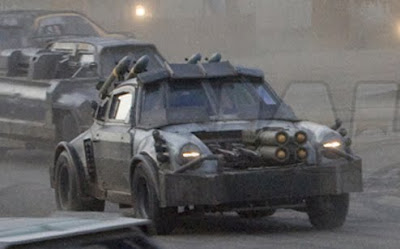
They use the same "sell" their methods are always used when they sell PCP. Basically selling "gap" of street corners, parks, vehicles, etc. While the "crack" was taken, gang members have been overwhelmed by demand. PCP was simply a "ghetto" drug, but the "crack" is different. Gang members have difficulty "rocking" is fast enough to keep up with demand. "Crack" of all races, economic and social barriers. Not only interesting in the ghetto, but it was the same, if not more interesting for those who live in the suburbs. This drug is a manufacturer of instant money to these gangs.
The band members tried to develop various methods of distributing "crack" to reflect the high volume "clients", without actually doing in the local "street corner" risk arrest themselves. Consequently, a new phenomenon emerged in the South Central Region. "Crack House.
"Homes Crack houses have been modified to meet the needs of drug traffickers, in addition to being a place that is easily accessible and convenient for buyers of drugs. The windows and doors of houses are reinforced with bars of Security Steel. Front door security screen is usually closed with a stainless steel wire mesh with small holes, and the type of a mail slot. This allows drug traffickers to the house to see who came to the door of entry. This also prevents buyers from people who actually identify those who sell drugs. The money and the crack will be exchanged through the slot "mail". Note: the drug suppliers (Chief gang) would never go in the house for fear of being arrested.
Usually some members of the gang will always be in these houses. Their belief is that some additional gang members will provide greater protection for their operations, and more if the house had been raided by the police drug can be destroyed more easily and quickly. In addition, the extra weight makes it more difficult for police to identify individuals who actually distributed the drug through the door. This also allows a possible continuation of a little more difficult.
Operating a crack house is a new learning experience for both gangs and law enforcement. For law enforcement, the main problem is to enter the house immediately before the drug was destroyed. For gang members, while it reduced the amount of cocaine that they would lose if their homes were attacked.
Entry techniques for applying law developed by trial and error method. Once the registration form can imagine considered, and is sometimes used. The type of rubber-wheeled tanks of vehicles spent pot lining around the house for vehicles with safety bar wenches off slightly. Of course, all these methods also need time to prepare and distribute. Consequently, they are inherently inefficient, except for some of destroying the houses are usually rented.
Once the gang members see the police put up one of these types of guarantee operations in their environment, warning whistles could be heard throughout the region. The 'crack' and retailers are usually disappeared when the transaction is established and implemented. Over time the techniques developed came quietly enough, and very effective. Several small teams can enter the Fort "crack house in less than 30 seconds.
Initially, the leaders of drug gangs provide homes with a "Crack" to last a day or more. If law enforcement has begun to make their entry will begin flushing the stone in the toilet. Gang problem facing is that they generally can only flush once when the water is usually turned off by the police. A number of "rock" the house of bottled water in the extra hand should this situation occur, but it is very convenient.
As law enforcement becomes more effective in their technical input, gang members are available to reduce the supply "gap" for only a few hours to minimize potential losses. They also found a way to do without "cracked". They will save a large pot of boiling water on the fire. If law enforcement comes, they will destroy the "cracked" by entering into boiling water.
In mid 1980, "Crack house phenomenon began to disappear. Paging became the latest rage for drug traffickers. The pager new method opens the possibility to distribute crack cocaine. Almost all gang members have their own pager.
Other important changes began to occur during this period. The distribution of drugs "zone", in collaboration with Crip gangs and the culture of blood, began to spread throughout the city. Both Crips and Blood began competing for some of these new "virgin" territory. This has led to violence between gangs, reaching its climax. Daily shooting is the norm. Finally, blood and drug Crip leaders find common bonds they could all agree. "Money".
Some gangs are there in the front line "Crack" distribution look more visible, more powerful and more dangerous. The money goes in this environment more rapidly than the gang members could spend. The gang members buy everything from horse racing thoroughbreds, pig won a prize, the jewelery, custom low rider, etc. Money is not a problem.
Some of these gangs are the following:
Mob Piru "Mob James", "STATE", Johnson, et. al
Grape Street Crips "Honcho", "McGill", and. al
Santana Block & S / S Crips "Whiskey", "Gangster", "Turtle," "Twins" and. al
The day Wayne, aka "Honcho" has also bought its own paging service. Various Crip and Blood gangs used their service. Very probably not aware of the services Blood Gangs pager ownership of their rivals "Honcho".
Ringleaders, such as "Honcho", "Harry O", McGill, McGowan, Johnson, et. al, has a bigger dream. They could see the potential windfall they would reap if they are able to distribute cocaine rock across the nation. They follow up on those dreams. They started to use this unfortunate nation wide venture with distribution of drugs moving "boy" house in major cities across America. They also know that fear the reputation of the Los Angeles gang to come help the opposition of the local environment.
Although gang members as "Honcho" fulfill their dreams of a nation wide "crack" the distribution ring other gang members, such as Easy E, etc., which has a pocket full of drug money , want to be a super singing stars. The medicine they use the money to rent studio time to achieve those dreams.
A number of other groups such as "Eight Ball", "NWA", etc. are also trying to break into the entertainment field. "NWA" (niggar with attitude) is a Gangster Crip Compton. "NWA is one of the first group of fairly good results with" anti-establishment "gangster lyrics. They are also a pioneer success Compton (Mob Piru, Atlantic Drive Crips, etc.), the gangster rapper who appeared on the scene in the 90s.
Friday, October 9, 2009
Cheerful father on blood
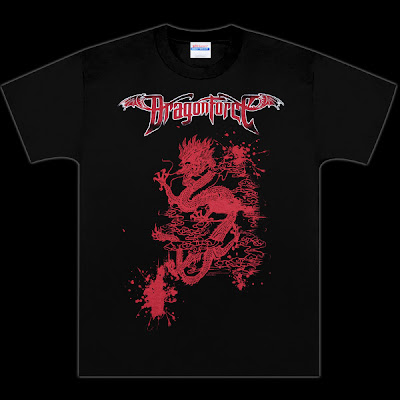
too Piru Piru gang who call themselves the top of the original tree.
Wednesday, October 7, 2009
Blood tried to resist the action of the victim

Love
Over
Oppression and Ruin
Crips terrorized our neighbor hood and rape or they inundate the community with drugs because they fall within the White Mans plan to destroy blacks. Blood tried to resist the action of the victim, but the same game drugs that cause conflict between the latter two are still present. the only way to solve the problem must be smart enough so it has a distinct white people use to lose focus and take advantage of our early goals to make money and keep the life Familys Black. Now we cut the neck of each other to survive to get food to take luxury cars to smoke the best weed and power. We do any kind of dirt we fought for the whites, you do not know what was funny they were. Unite to solve the larger problem of poverty in our inner cities.
me and my two brothers and blood brothas crip.Don 't live niggas like crabs and slobs do not let them take our freedom vote to lead our forces in chains and shackles and lies. we can make a difference. bang for the right reasons.
Wednesday, September 23, 2009
Blood infiltrate washington
The district was organized gang problem, said Moten, who is now an anti-violence advocates in the district. City crews and the environment Homegrown blood gangs are gangs of Los Angeles, a criminal enterprise that is widely known for his rivalry with the Crips.
But about six months ago, when a teenager shows the cigarette burns on his arm - the initiation rite of adolescent experience that getting a tattoo under the eye - Moten said he realized that blood was serious.
"They did it in LA They do not in DC," said Moten, co-founder of Peaceoholics, DC, environmental organization that mediates disputes. "It's absurd. Our young people will be sucked directly into this if we do not do something. "
Law enforcement recognizes that blood, and to a lesser degree the Crips, has grown in Maryland and began to creep into the District.
Silver Spring, downtown last month, police in Montgomery County set up an operation to fight against the increasing criminal activity of the blood, including armed robbery. The police dispersed 22-year-old DC man and four teenagers after they watched them spray paint "Bloodz" on the wall and then tried to steal a man.
National Gang, involved in robbery, extortion, prostitution, car theft and drugs, who moved south from New York, said County Prosecutor Jeffrey Montgomery Wennar the Mid-Atlantic Regional Investigators Network.
In Baltimore, more than 28 members recognized Tree Top Piru Blood gang indicted in February on racketeering, drug and weapons charge. Piru name comes from a group of streets in Compton, California, named after a tree.
Rival gangs fight for power in the suburbs of Maryland, conducted a series of violent crimes last year. A man was fatally stabbed in the Lakeforest Mall in Gaithersburg, and a week of shooting followed by a response that has left several alleged gang members were wounded.
Authorities said the attack involved a vampire blood, Blood and Black Mob Crips.
In DC, Blood concentrated along Minnesota Avenue in Anacostia and Trinidad, the Northeast neighborhood destroyed by a series of murders this summer, said police officials.
Blood in the Trinity, which first appeared in December, 5th District Commander Lamar Greene said.
Police see gang graffiti and teenagers walking through the streets wearing red bands of about six months ago, said Greene. The Crips, had settled in the north-DC, "he added.
"Fortunately, many of them were seen wearing clothes, walking with a scarf in the pocket, very young. That's probably why we do not see the violence," said Greene. "But groups like this, you must be serious."
DC police said they were collecting information on blood flow and CRIPS. One of the recruiters of blood in Trinidad, a heavily tattooed gang of men in their 20s who had lived outside the city, told police he had recently come out of the army.
The data collected by the group last summer Wennar in Blood deserves to have 400 members in the region, but experts say the gang that number has more than doubled in late 2007 and has continued to increase. The gang has exceeded that of gangs as the greatest Latino Mara Salvatrucha, or MS-13 and Latin Kings.
The report, which said 36 separate gangs were active, based on self-identification of the suspect, tattoos, clothing, informants and methods of police investigation.
The Blood and Crips recruit in schools, roads, playgrounds and even in Metro bus, according to experts. Most of the recruitment occurred in the Maryland prison, where joining a gang is a matter of survival. The first blood with his roots in Maryland, there are about nine years in Washington County Detention Center in New York. They are known as Trey 8 and later became insane Red Devils.
After the prisoners are released, they often return to their old neighborhood to help gain the supremacy of the national gang of local groups, Wennar said.
Sometimes they use the attraction of unions affiliated with a reputation for violence, "he added. Sometimes they use threats or beatings.
California Wennar said the gang had evolved so that law enforcement and the media focused on the Latin gangs.
"If you operate under the radar, it's great," said Wennar. "Everyone has forgotten the blood and the Crips.
Links
Monday, September 21, 2009
Bloods graffiti underground

Blood graffiti in a subway station, of citynoise.org. More information here.
blood in the street, MS-13 vs 135 Newark Piru Blood-high tree-graffiti Blood Piru Knowledge of blood which means the signature of the Blood gang blood gang ghost town of San Diego dangerous blood-Compton.
Bloods symbols with his fingers
They have done with your fingers to create a symbol, teenagers in Corona formed a five-pointed star, symbol of blood. Read more here.
Five Point Star Blood-gang-san diego dangerous Compton-135 Newark-high tree Piru Piru Blood knowledge streaks of blood which means that the gang
Sunday, September 20, 2009
Houses bloods groups

"I made a trip to America and the end of the year, me and my friends want to visit Compton to see and do some photos. What danger? Did you tell us not to go? And what is the best and safest way you recconmend?
"Go if you want. Just Be Street wise and how you manage. "
These are some comments from Yahoo Answers About COMPTON dangerous? More information about the blood of knowledge here.
San Diego Blood gang MS-13 vs. blood-blood-signature dangerous gang of Compton-Newark-135 Piru Blood street gang ghost town-Tree Top Piru blood blood-graffiti knowledge blood means that the gang.





